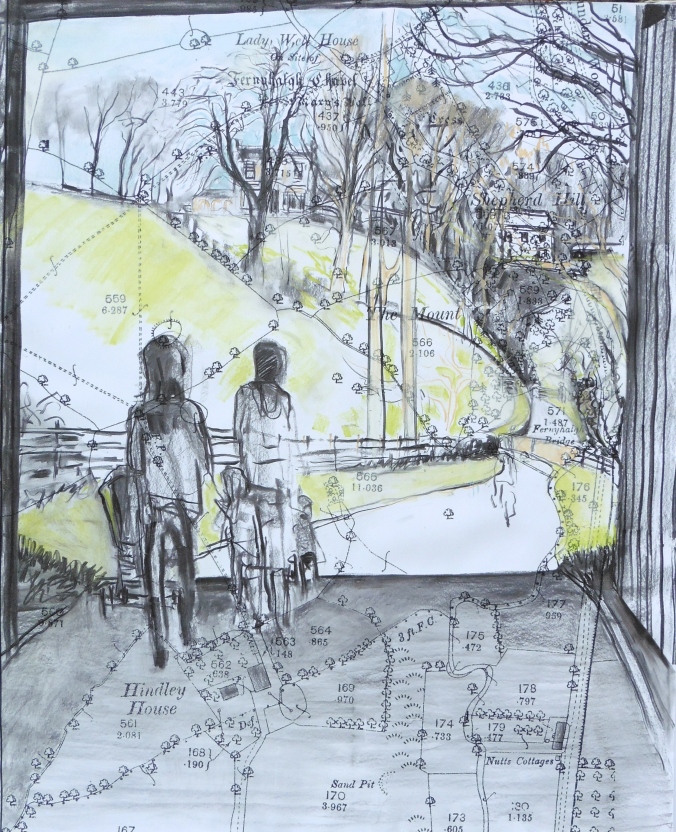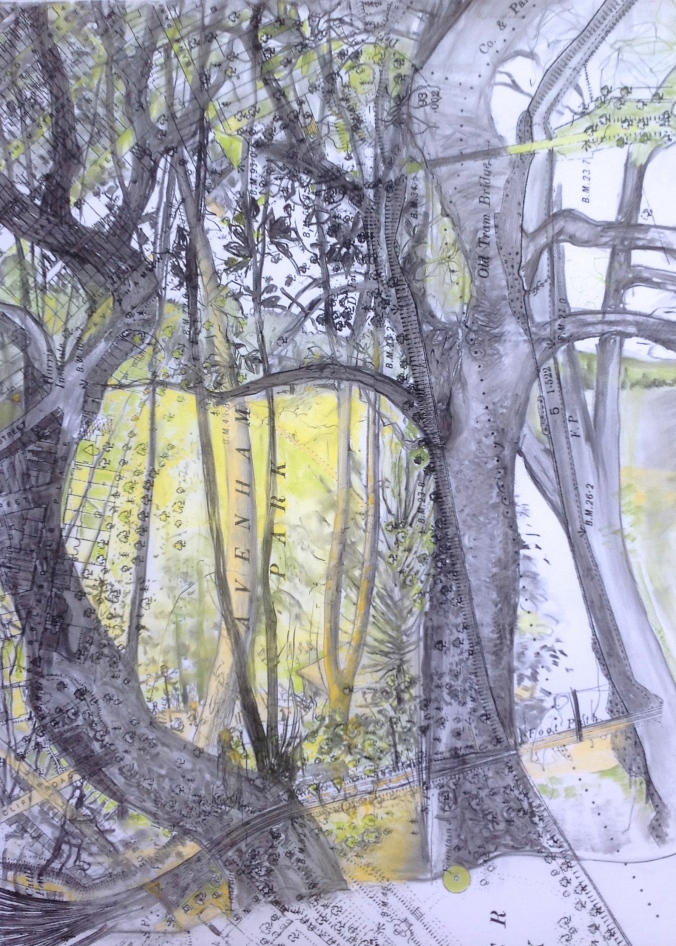
There are elements of Olivia Keith‘s work for The Expanded City that are familiar within socially engaged practices, such as using the unwritten knowledge and experience of local inhabitants to informally map an area. Keith has developed a way of recording this information, and her process is complex and considered, moving beyond the collecting of memories for its own sake. In order to facilitate her conversations with passers-by, Keith has developed a framework, whereby each of her days spent on site results in a large-scale multimedia landscape drawing, which in turn acts as a point of conversation, making Keith conspicuous within her chosen environment. She has described how it is important to communicate openness, but not to actually initiate conversation within the framework, and this self-imposed constraint is one of the ways in which Keith’s ongoing project differs from familiar forms of socially engaged memory collecting. Any knowledge that is gained during these days spent drawing outdoors is therefore offered consciously and deliberately, and as such also offers an overview of the information that people choose to go out of their way to share with strangers, which by implication is the knowledge that is useful, or too precious to keep to oneself.

The sites that Keith has selected for this initial stage of her work were chosen for their symbolic properties, as well as whether they are in the areas of Preston corresponding to the ‘expanding city’. The motif of the bridge is an important point of reference; of obvious significance in various contexts, here bridges are appropriated due to their proximity to the waterways and thoroughfares of a place, and as such often pointing to earlier configurations of inhabitance and movement. The site chosen for her symposium presentation was exemplary of this focus on bridges as markers of movement and change, forming a meeting point between suburb, countryside, motorway and waterway. There are also a number of variables that feed into how Keith’s framework plays out in each instance, such as the weather of course, but also the density of the current local population, and whether the site is one of leisure, or is used purely as a thoroughfare, with this affecting whether passers-by are likely to stop, ask questions, and offer new knowledge. The journey that Keith must take in order to locate her chosen spot further contributes towards the finished work, intuitively affecting the overall experience before she had even begun to draw.

Having selected a place from which to work, the next step is to deduce the orientation of the historical maps that Keith uses as grounds for her drawings. This will dictate the direction that she will face, and in turn the interactions that she will have whilst on site, which is why in some of her drawings the backdrop map will be rotated or upside down. The scale of the drawing is then chosen intuitively, with the intention for the underlying map to be treated as tabula rasa giving way to the inevitability of pareidolia, whereby Keith’s drawings seem to unintentionally correspond in meaningful ways with the maps on which they are delineated. Given the way in which Keith’s practice depends on an interchange between the land and the vernacular knowledge of its inhabitants, this project can be conceptually likened to plate tectonics in order to understand its mechanisms. The act of overwriting whilst simultaneously choosing to preserve, and the seemingly random focus on certain details, mimics the much slower changes that take place in the natural world. As with the geological movement of the earth’s crust, some material that was once on the surface is subducted below to be melted down and recycled, whereas other material is pushed to the surface either so slowly as to be unnoticeable, or with a violent and disruptive force.
